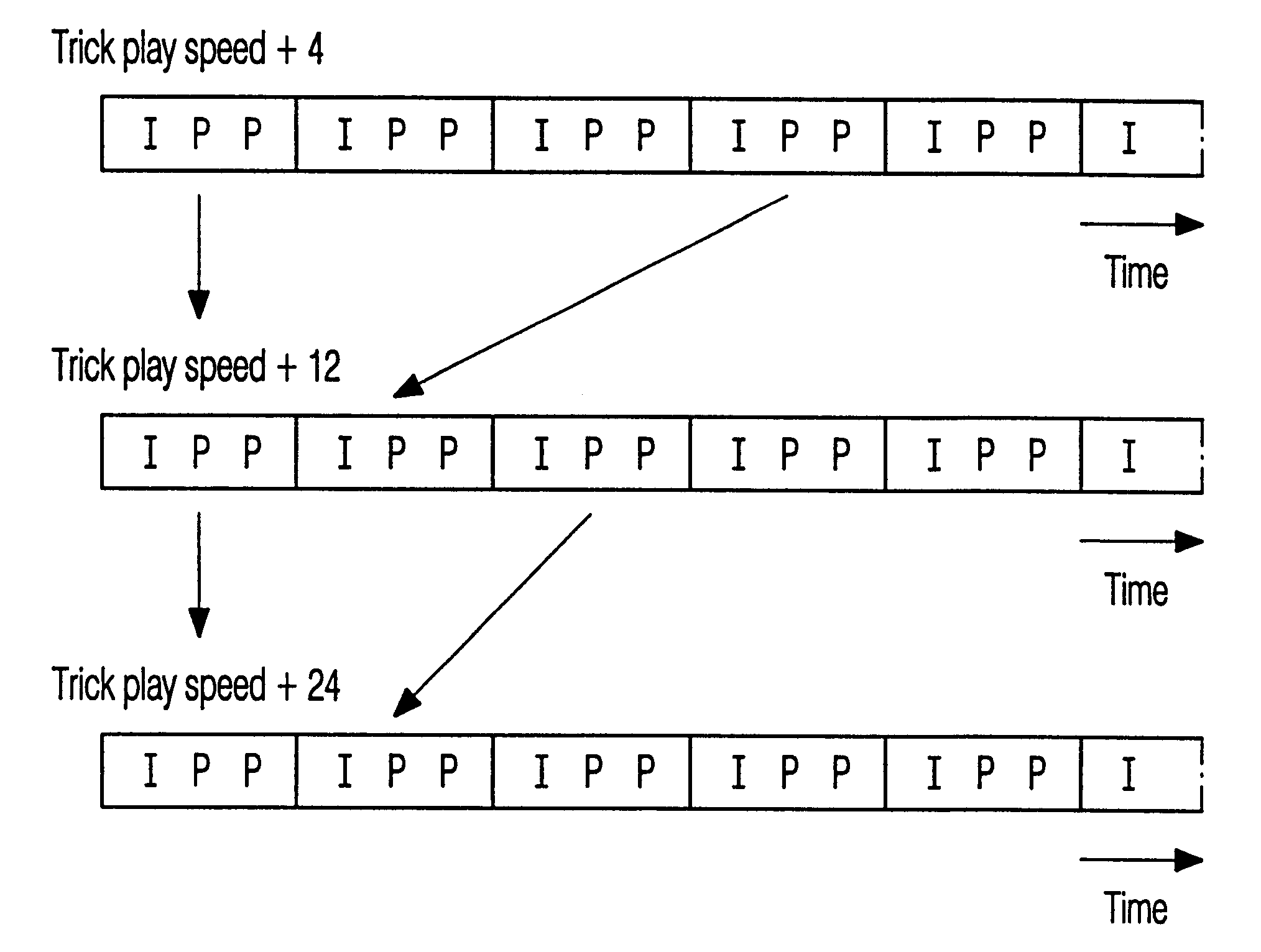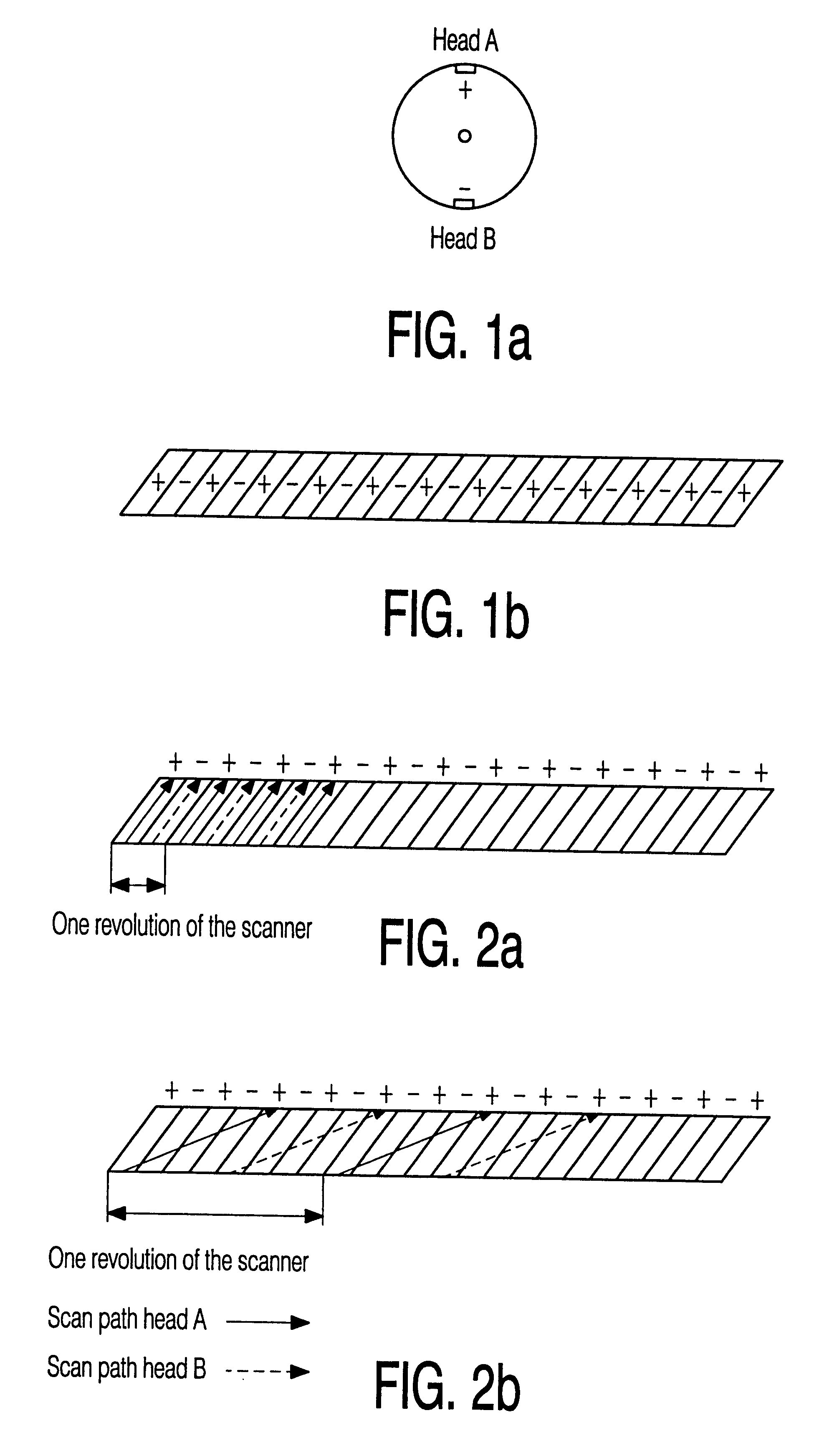Trick play signal generation for a digital video recorder using retrieved intra-encoded pictures and generated inter-encoded pictures
a digital video recorder and trick play technology, applied in the field of trick play signal generation for digital video recorders, can solve the problems of incompatible bit-rate reduction technology with compression technology, no equipment has been produced that supports this standard, and the inability to simply use intra-frame-encoded pictures (i-pictures) with an acceptable refresh rate in the trick play information signal
- Summary
- Abstract
- Description
- Claims
- Application Information
AI Technical Summary
Benefits of technology
Problems solved by technology
Method used
Image
Examples
Embodiment Construction
Frame period=40 ms, (25 Hz frame rate)
Amount_of.sub.-- 27 MHz_cycles_per_frame_period=(Frame period*System clock)
1080000=40e-3*27e6
The DTS and PTS have a resolution based on a 90 KHz clock. For this reason the Amount_of.sub.-- 27 MHz_cycles_per_frame_period must be divided by 300. This division results in a frame period value of 3600.
So, when three frame period are required to transmit one I-frame and two empty P-frames, then the initialization value for DTS and PTS becomes:
DTS=3*3600=10800
PTS=4*3600=14400
These values are depicted at a 33-bit wide field in the PES header.
The initialization value depends on the amount of time that is required to transmit the first picture to the decoder. This depends on the VBV_delay and the time consumed, extra delay, by the multiplex process.
The transport stream multiplex operation, multiplexes the packetized video elementary stream and the required Program Specific Information (PSI). For this purpose, the packetized video elemen...
PUM
 Login to View More
Login to View More Abstract
Description
Claims
Application Information
 Login to View More
Login to View More - R&D
- Intellectual Property
- Life Sciences
- Materials
- Tech Scout
- Unparalleled Data Quality
- Higher Quality Content
- 60% Fewer Hallucinations
Browse by: Latest US Patents, China's latest patents, Technical Efficacy Thesaurus, Application Domain, Technology Topic, Popular Technical Reports.
© 2025 PatSnap. All rights reserved.Legal|Privacy policy|Modern Slavery Act Transparency Statement|Sitemap|About US| Contact US: help@patsnap.com



